Best Gaming Laptops for All Budgets (2025 Edition)
Whether you want the ultimate high-performance gaming laptop or you just need the best portable gaming PC you can get on a tight budget, you need to find the best gaming laptop.
Best Gaming Laptops of 2025
Now that you know the important factors to look for, here is our top 10 list for recommended gaming laptops.
1. Best Overall: MSI Titan 18 HX
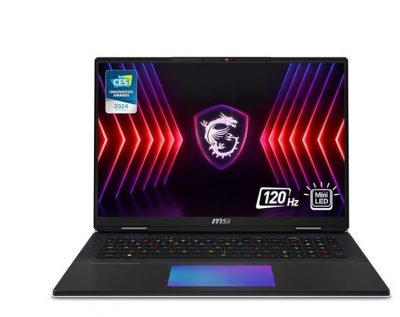
This powerful laptop has state of the art specs, incredible graphics and an advanced cooling system to protect your laptop from overheating. It has a generous display and tons of other great features, which is why it’s our favorite!:
- Ada architecture allows advanced ray tracing for realistic graphics
- 18 inch 4K mini LED display for brilliant colors and quick response times
- Wi-Fi 7 network speeds allow you to download files or stream with lightning speeds
- Intel Core i9 processor gives speedy power and agility
- Vapor chamber cooler with 4 exhausts and 2 fans
- SteelSeries mechanical per-key RGB gaming keyboard
- Powered by NVIDIA DLSS 3
- High frame rates and resolutions
2. Best Low-Budget: Acer Nitro 16
Acer is a rare combination of low cost and high quality. It has stellar reviews, substantial stats, and won’t break the bank. A small handful of users have had minor issues with temperatures, so be sure you keep it in a well ventilated place to prevent overheating. Here are some features we love:
- AMD Ryzen processor
- Octa-Core Processor with precision boost gives you the power needed for high demand games
- NVIDIA DLSS 3 tech
- 16 inch display with 165Hz refresh rates
- ADA Lovelace architecture
- Good port selection
- AI-enhanced video chat
- Lightning fast and responsive
- 1080p resolution
- NVIDIA RTX 4050 graphics
3. Best Low-Budget Alternative: MSI Katana 15
Another cost-friendly option, it has respectable specs, a great price, and good graphics with the ability to handle 1080p easily. Sometimes the stock will run out, so keep your eyes peeled for this amazing deal:
- Intel Core i17
- NVIDIA RTX 3060 graphics
- ADA Lovelace architecture advances performance and graphics
- Low latency
- Ray tracing
- Hybrid core architecture capable of handling demanding games and multitasking
- Exclusive Cooler Boost 5 tech
- MSI center lets you customize your settings for optimal gameplay
4. Best Light, Thin Option: Asus ROG Strix G16
If you want a laptop that travels well, doesn’t take up much space, and is still powerful enough to handle your gaming needs, you’ve found your winner. Weighing less than 5 pounds and under an inch thick, this is beyond portable. Besides the slim aesthetic, there is plenty of oomph under the hood to keep you going through multitasking and intense gaming sessions.
- AMD Ryzen 7 processor
- NVIDIA RTX 4060 graphics
- 16-inch QHD display
- 13th Gen Intel Core i7
- ROG intelligent cooling
- Super-fast memory and storage
- MUX Switch with advanced Optimus boosts your gaming performance by up to 10% through routing frames from the dGPU
- Optimizes battery life
5. Best for Esports: Lenovo Legion Pro 5i
If you’re into competitive gaming, the Lenovo Legion will be a fitting option. Heavy-duty specs provide high frame rates for demanding games. It also has a high refresh rate and a responsive keyboard too. It works fast right out of the box, and you can further optimize with overclocking options.
- 64GB DDR5 RAM allows you to use multiple apps and browser tabs and the same time
- 13 Gen Intel Core i7
- NVIDIA GeForce RTX 1060
- Up to 6 hours of battery life
- RGB backlit keyboard
- 1080p
- Legion ColdFront cooling technology keeps it from overheating
- Lots of ports and slots, including Ethernet
6.Best for Replacing Desktops: Alienware m18 R2
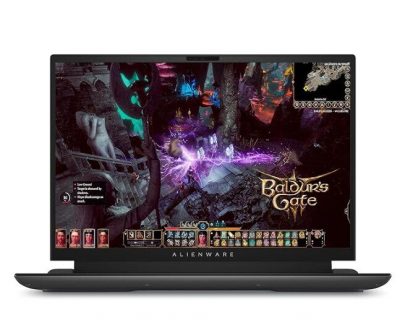
This monster of a laptop gives desktop-like performance. With the huge 18-inch display and solid specs, it handles your gaming requirements with ease. Like other laptops on this list, sometimes you may run across availability issues. There are plenty of places to purchase this pick, but keep in mind sometimes minor specs, like display, storage, and memory can be slightly different. Pay attention to all these stats if you end up shopping around to find your best deal. They may differ without you realizing it.
- Intel Core i9 processors
- NVIDIA RTX 4080 graphics
- DDR5 memory
- 480 Hz refresh rate
- High speed RAM and lots of storage space
- Robust cooling system (Alienware Cryo-tech)
- Dynamic display switching
7. Best 15-inch Option: Razer Blade 15
If you want a specific size laptop, this sleek choice will combine compactness with power, letting you handle high-demand games without taking up a lot of space. It’s only a mere 0.7” thick! Other benefits include:
- Core i9 processor
- NVIDIA RTX 4070 graphics (perfect for 1440p gaming)
- Thin and compact
- Tensor cores and ray tracing
- Aluminum frame provides durability
- Vacuum sealed, liquid filled copper vapor chamber for maximum cooling
- Customizable keyboard colors
- Expandable memory and storage
8. Best 14-inch Option: Asus ROG Zephyrus G14
Even smaller than the Razer Blade 15, the Zephyrus G14 is perfect for anyone on the go. It may be small, but it’s also mighty, with a NVIDIA RTX 4060 graphics and an AMD Ryzen 9 processor.
- 120Hz refresh rate
- Dolby Atmos sound
- Only weighs 3.64 pounds
- Full HD display
- Swift multitasking capabilities
- MUX Switch with advanced Optimus boosts performance up to 10%
- Backlit Chiclet keyboard
- AI noise-canceling tech
- Various free trials, such as McAfee and Microsoft 365
9. Best for Custom Design Options: Origin EON 16SL
A quick heads up on this one. Finding an Origin EON 16-SL might be a little tricky if supplies are short. You can always try the EON15-SL, or the EON16-X. They’re all very similar and the differences (when there are any) are minute at best. Regardless which version you end up with, they all have great customizable choices, even HD UV printing so you get the look you want! The ability to piecemeal your preferences and create the exact laptop you want is the biggest strength of this pick.
- Thin and light but with great specs
- NVIDIA G-Sync
- 14th Gen Intel Processor
- NVIDIA GeForce RTX 4090
- Fully customizable features, such as integrated high-def audio, OS drive choices, and memory sizes
- 240Hz QHD display
- Super-fast and responsive
10. Best Macbook Alternative: Lenovo Slim Pro 9i (14.5-Inch)
A slim 14.5 inches, this Lenovo laptop is a perfect Macbook alternative for anyone who appreciates portability. The impressive mini LED display lets graphics shine all while being super convenient to carry. A word of warning, however. Like many of these laptops, availability differs. Be sure that if you’re buying on Amazon that you check the size of the screen. Sometimes bigger screen sizes might slip through the cracks so if size is important to you, pay attention! You may have better luck buying from Lenovo directly.
- 13th Gen Intel Core
- NVIDIA Studio-validated GeForce RTX 40 series graphics
- 3.2K PureSight Mini LED pro display
- Lenovo X power performance tuning
- 165Hz refresh rates
- Adobe RGB triple color gamuts
- Ray tracing
- Super-fast rendering
- 4 precision mics that help filter background noise
- Grease resistant keys
- Wi-Fi 6E and integrated security features for system/data safety
What To Look For In A Gaming Laptop
Now, we’ll go over everything you need to know to make an informed buying decision. We’ll also cover common questions about laptop tech, what features to look for, and why they’re important.
Display Types
Depending on your budget and the laptop you choose, your display technology may vary. Here’s a quick rundown of the different kinds and their benefits.
LCD: Liquid crystal display screens need a backlit light source to illuminate the pixels, which moves and changes how light passes through, which then affects what you see on your screen.
IPS Display (In plane switching): A type of LCD technology that aligns the liquid crystals parallel to the panel, resulting in more accurate colors, better consistency, improved contrast, and higher image quality. They can have slower response times compared to other display options, however, so you may experience motion blur in fast-paced content.
LED (Light emitting diode): LED monitors are technically LCD monitors, but not all LCD monitors are LEDs. Confused yet? In regard to display, LED and LCD are the same in regard to the lighting source. They both can use backlighting, but LCD uses fluorescent lighting to illuminate the crystals whereas LEDs produce their own light through light-emitting diodes. There is a lot of overlap and sometimes these terms are used interchangeably, only adding to the confusion. LEDs are diverse, have sharper images, and last longer than many other types of display technology. They are quite common in laptops and other screen based equipment.
OLED (organic light emitting diode): A type of LED tech, OLED doesn’t need a separate backlight as each pixel has its own light. This means higher contrast between black shades and light, improved responsiveness, and other massive benefits to image quality. The downside is they’re usually much more expensive. Also, they can suffer from “dead pixels,” where power doesn’t reach a particular pixel (or more) as a defect. This means you’ll have a tiny black or white dot in your screen that can be incredibly distracting.
Refresh Rates
60 Hz and 144 Hz, etc., are measures of refresh rate, an integral display specification if you’re a serious gamer.
If you’ve ever played a game and it feels choppy, that’s because the frame rate, or Frames Per Second (FPS), is dropping. 60 FPS will look smooth to most people. A lower 30 FPS is considered acceptable (especially by console gamers) but won’t feel as smooth.
FPS and refresh rate are both measures of how many individual images are being displayed in the span of a single second.
- FPS measures images-per-second from the software
- Refresh rate measures images-per-second from the hardware/display
If these numbers don’t match, the experience may look choppy. If your FPS exceeds your refresh rate, you won’t see the benefits of those higher frames, since the lower refresh rate can still only show off 60 images per second.
A laptop with a 144 Hz display gives you benefits when games run at frame rates higher than 60. This leads to an increase in perceived fluidity and responsiveness, and can be a competitive advantage in multiplayer games. Refresh rates continue to increase as tech advances. 240Hz is considered high these days, but there are niche offerings that can go as high as 360Hz and even further, as tech evolves.
How CPUs Impact Gaming Performance
When playing PC games, you can turn down graphics settings to achieve higher frame rates, but there are limitations, especially if you have a low-end CPU. This is called a CPU bottleneck, and that’s troublesome with laptops, as you can’t upgrade your hardware, so get a good CPU today so you aren’t hurting tomorrow.
- CPU determines the maximum performance in any game, regardless of graphics settings
- GPU determines the best performance you can get at particular settings or resolutions
How Much RAM Do You Need?
RAM is a spec that determines how good your PC will be at juggling different tasks. With most machines having 8 GB or more of it, your needs will be taken care of just fine.
However, you may see a performance benefit with higher-end memory kits, especially for games built for using 16 GB of RAM.
Understanding SSD and HDD types
Here are the basic storage speed classes, each increasing in ability:
- 5400 RPM HDD: This is a traditional, outdated laptop hard drive. Most experiences are fine, but initial boot/game loading times will be long
- 7200 RPM HDD: This is the standard speed you can expect from a desktop PC or current-gen games. Loading times are improved, but still slower than an SSD
- SATA SSD: Massively faster than any HDD, and has far faster loading times and boot times
- NVMe SSD: Much faster than a current-gen SATA SSD but doesn’t make as big a difference for pure gaming purposes. You’ll need a more powerful CPU to see a difference with storage speeds
What Difference Does An Ethernet Cable Make?
An Ethernet cable is a must-have for gaming online. Most laptop users use Wi-Fi to get online, however, nothing matches the reliability of an Ethernet cable, due to wireless interference, which adds variability to the signal between your machine and the game server. This is fine if you’re watching Netflix, since your data will be buffered far ahead of when it’s played, and little disruptions pass easily.
When gaming, though, this becomes a problem. If you’re playing online, a second of lag at the wrong time can get you killed. It’s even worse if you’re playing competitively.
To prevent these issues, use an Ethernet cable to reduce latency.
If you get a laptop without an Ethernet port, get a USB Ethernet adapter to compensate.
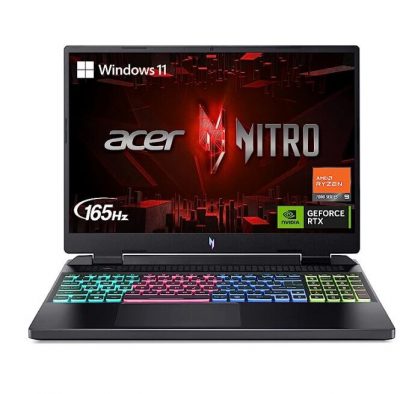
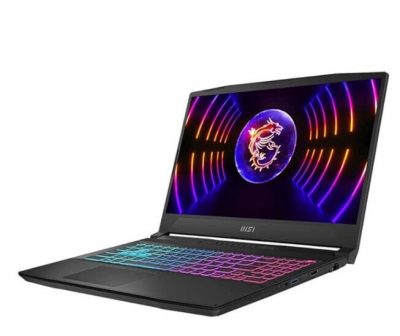
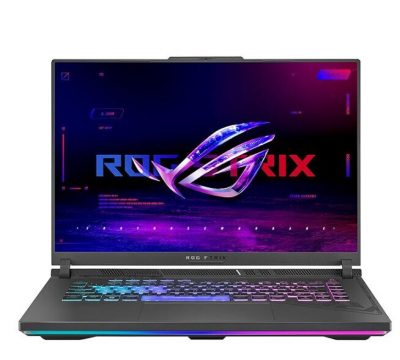
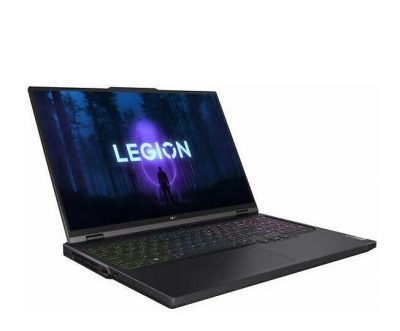
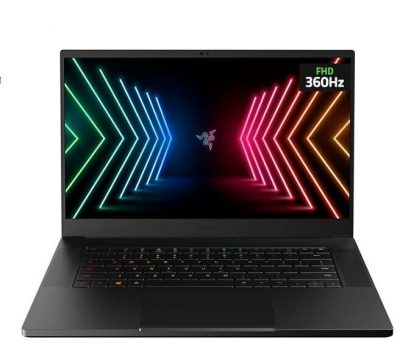
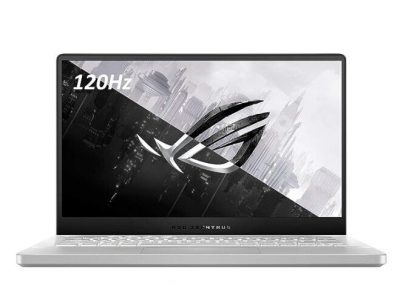
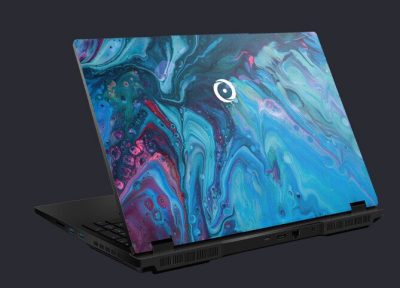
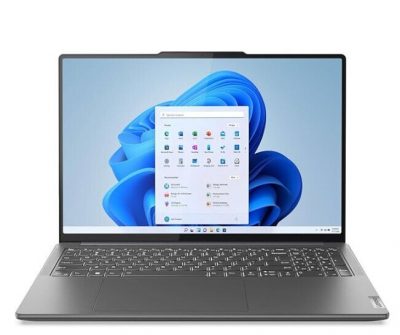
Such a great collection of gaming laptops to suit all budgets! This article is a treat to read in 2021 for gamers looking to buy a new gaming laptop!